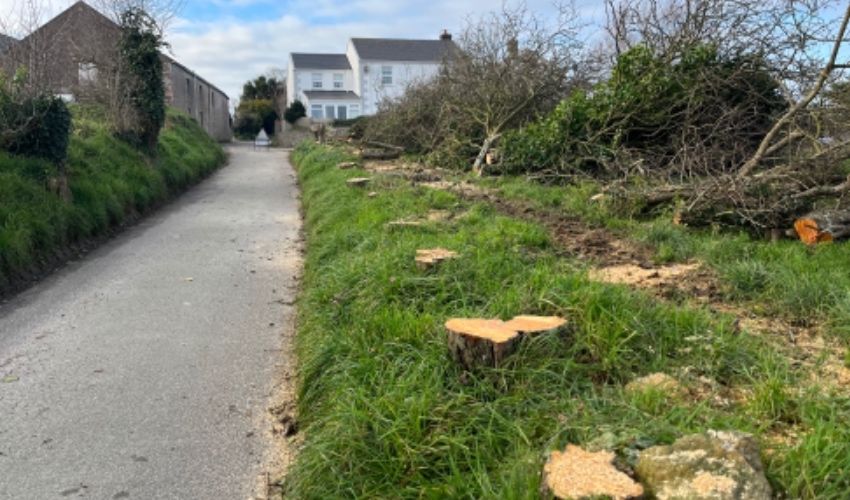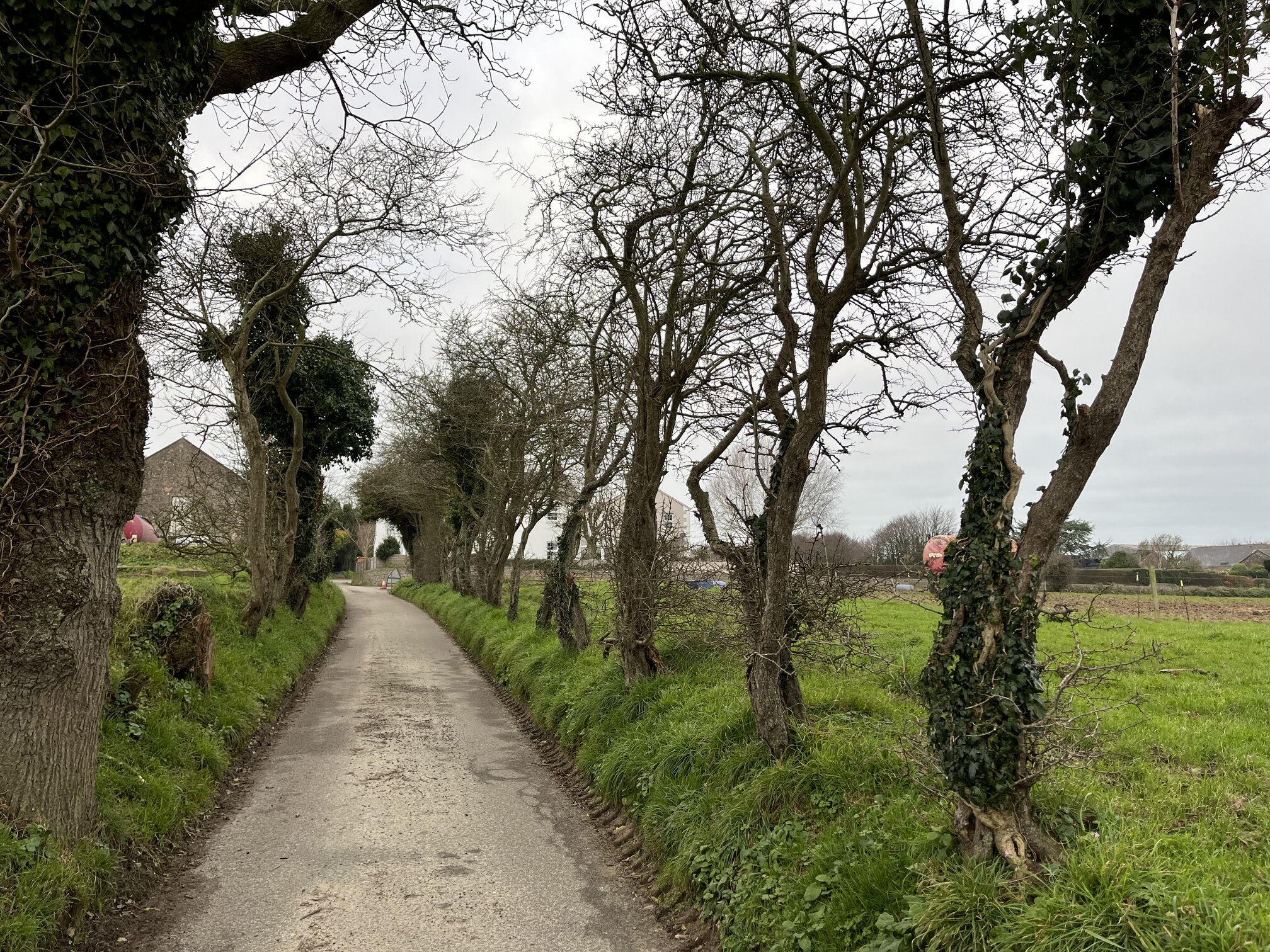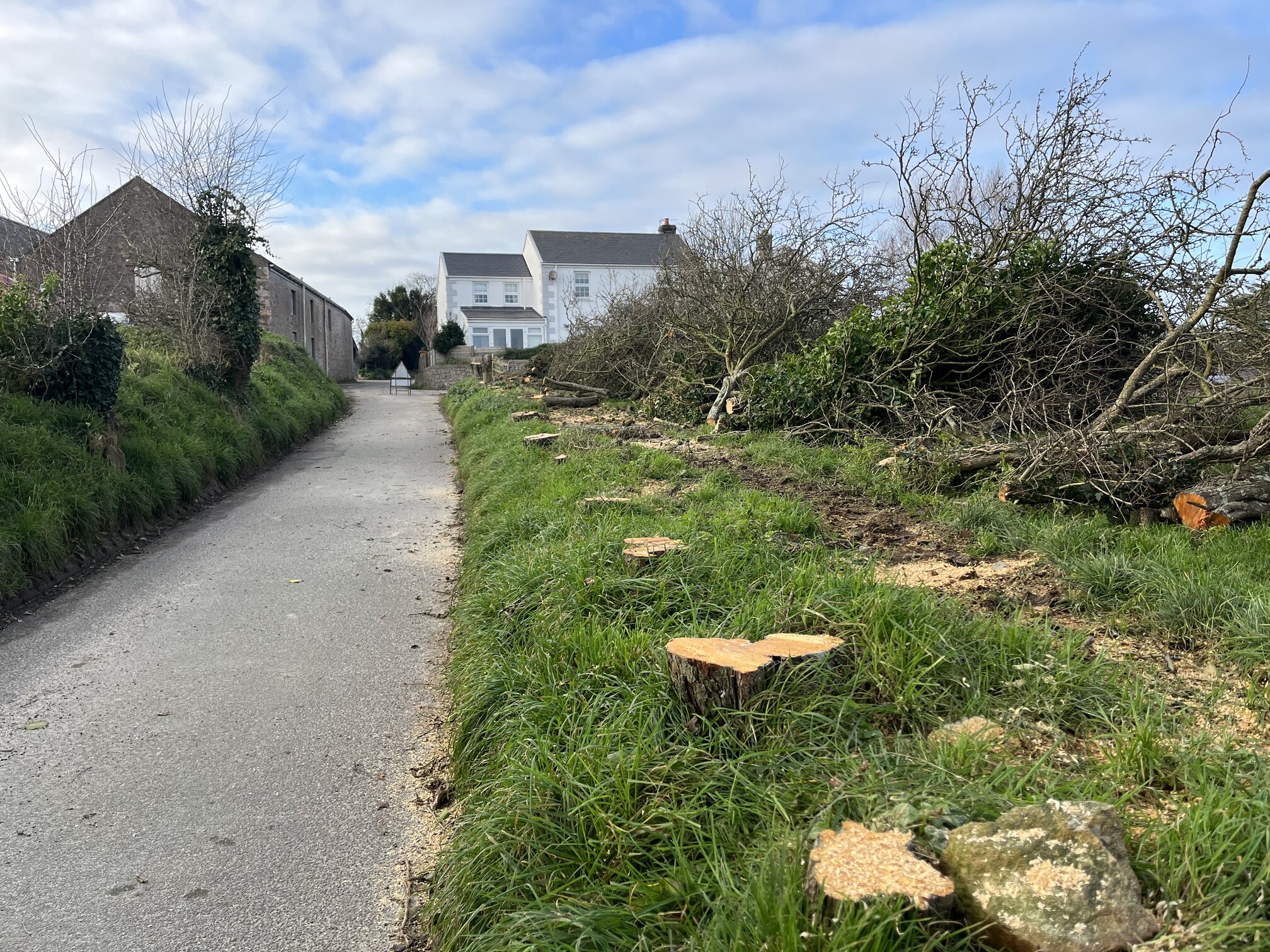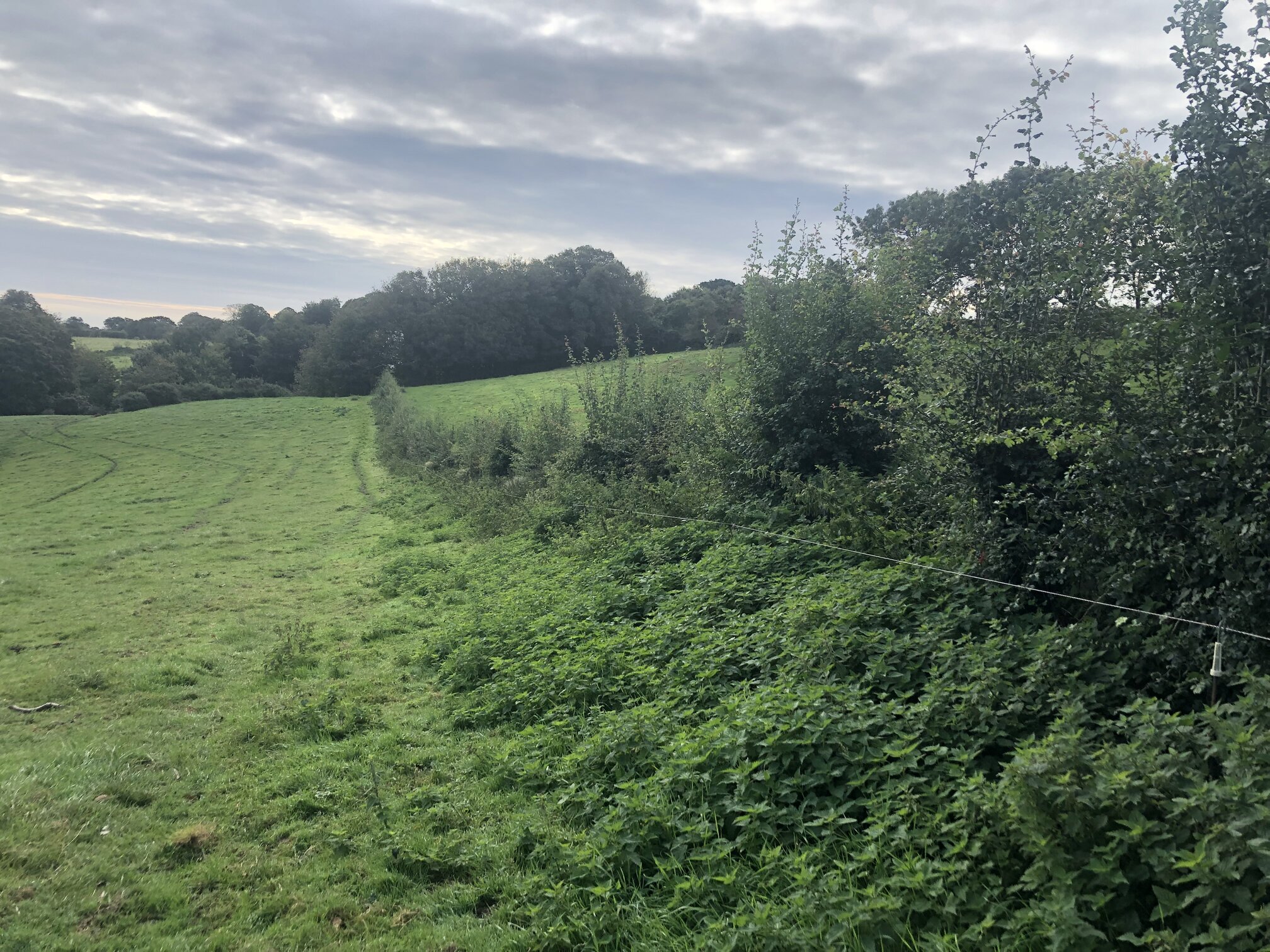


Islanders getting some fresh air through the lanes this Christmas are being asked not to panic if they see lines or sections of hedgerows lopped practically to the ground.
It is not an act of environmental vandalism by a neighbour wanting to improve their view. Nor is it a sign of disease or reckless rural management.
Rather, it is an example of the ancient practice of coppicing.
And within a year, the hedgerow should bounce back stronger, denser and easier to maintain.
Around 1km of hedgerows around fields farmed by Jersey Dairy suppliers are being cut down to allow the plants to regenerate.
The work is following on from a condition survey that was undertaken earlier this year to identify which hedgerows were in the poorest condition and in need of coppicing.
Poor hedgerows are characterised by tall leggy single stem plants, mushroom-shaped growth, gaps present, narrow structure and no significant woody foliage in the lower part.


Pictured: How a section of hedgerow looks before and after coppicing.
The project has brought the farmers together with Jersey Trees for Life and Sangan Island Conservation as part of Jersey Dairy’s commitment to Linking Environment and Farming, or LEAF, an accreditation scheme promoting sustainable practices.
Piers Sangan, who is involved with the project, said: “We’re cutting the hedgerows down to about four inches off the ground so I appreciate that it might look a bit drastic. Also, although coppicing is used extensively elsewhere, it has not been a traditional practice in Jersey, so seeing cut-back hedgerows is an unfamiliar sight.
“But we ask people to bear with us to see the vast improvements this will bring to our countryside.
“Over the coming year, the cut stems will put on up to 1.5m of growth.”
He added: “Coppicing makes the hedgerow return denser and more resilient. It also requires less maintenance going forward and each section will be put on a three-year cutting regime.

Pictured: How a hedgerow looks one year after coppicing.
“It’s worth remembering that hedgerows are not a natural phenomenon: they were all planted by mankind so they need to be maintained by mankind. If a hedgerow was left to grow it would become a line of trees.
“There are many positive benefits to coppicing including stronger hedgerows, more effective control of cattle and better carbon sequestration.”
So far, Mr Sangan and his team have cut down a total of 100m of hedgerow, the longest single gap being 70m. Most of the coppicing will be filling gaps in existing hedgerows rather than cutting down long sections.
Ten dairy farms around the island are involved in the project.
Comments
Comments on this story express the views of the commentator only, not Bailiwick Publishing. We are unable to guarantee the accuracy of any of those comments.